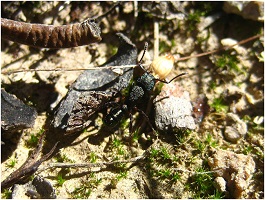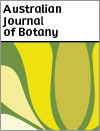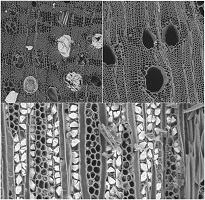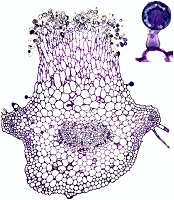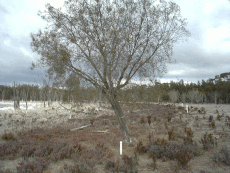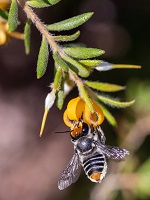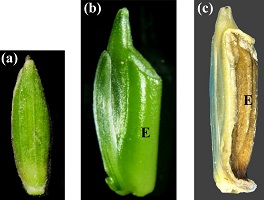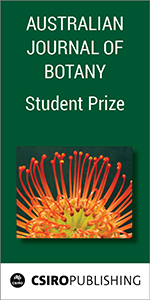Australian Journal of Botany
Volume 70
Number 1 2022
Three species of Lepidosperma were tested to determine whether the persistent perianth members are adapted to promote dispersal by ants. The perianth members showed a high lipid content and a fatty acid profile similar to known elaiosomes. Perianth material was removed in greater numbers than were diaspores in two of three species of Lepidosperma, and are thus likely to function as an elaiosome.
Protected areas in Brazil and around the world suffer from illegal logging for charcoal production, which prevents the fulfilment of their purpose. Here, we present the charcoal anatomy of tree species from protected areas as an important tool that can be useful to forensic charcoal identification and help in the conservation of the biodiversity of these areas in Brazil and other countries with similar problems.
This study set out to explore the functional role of the extrafloral nectaries recently described in Solanum fernandesii. Light and scanning electron microscopy showed that the petiolar gland is composed of a trichomatous epidermis. The trichome exudates contain a mixture of polysaccharides, pectins, mucilage, proteins, lipids, essential oils, resins, and phenolic compounds. These findings confirm that the petiolar glands in S. fernandesii are in fact resin glands and not extrafloral nectaries, as previously claimed.
Knowledge of the ability of native plants to grow in salty soils and to accumulate salt in their tissues is needed to identify useful plants for remediating salt-contaminated soils. Our study investigated seven native plant species found around two salt lakes in Western Australia. The results showed that three halophytic shrubs (saltbush, two Tecticornia species) and quandong (or bushfood) accumulated salts in their leaves at higher amounts than did other species and would be good candidates for remediating salt-contaminated soils.
We examined the reproductive biology of Persoonia hirsuta Pers. (Hairy Geebung), a threatened species in decline within fragmented habitats in the Greater Sydney region in New South Wales, Australia. Native bees, including Xylocopa, Leioproctus and Megachile species were the main floral visitors. Greater numbers of P. hirsuta fruits were initiated following cross-pollination treatments than self-pollination treatments. Therefore, small isolated populations are at risk of reproductive failure and local extinction if pollinators are not present to increase fruit development.
Grasses manifest several different breeding systems, one of which includes self-fertilisation within a closed flower, cleistogamy. In Australia, 135 of the 997 species were found to have cleistogamy that was classified into three main categories, one of which Charles Darwin considered ‘true cleistogamy’. Species with ‘true cleistogamy’ have two types of flowers, one involving out-crossing, that differ by what Darwin named ‘structural peculiarities’. The geographic distribution of cleistogamy in Australian grasses suggests it is an adaptation to erratic rainfall.
